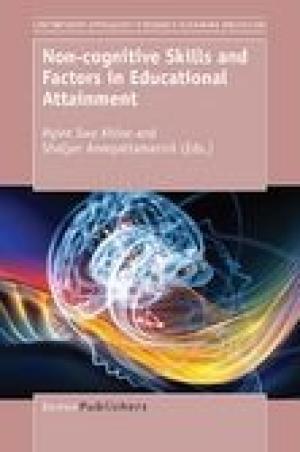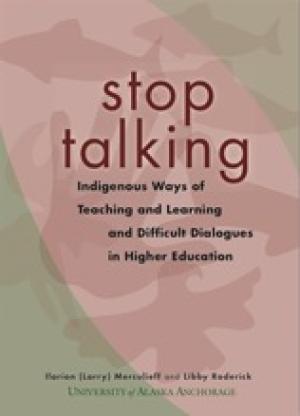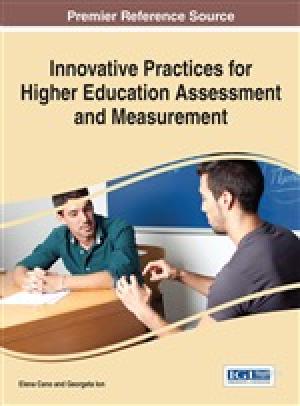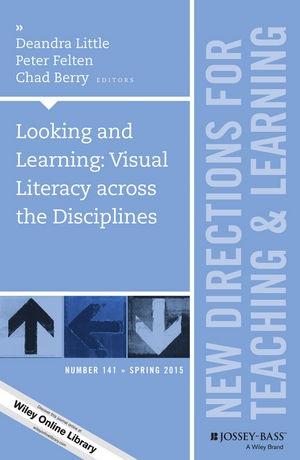Resources by Lisa Withrow

Editors Khine and Areepattamannil contribute to the series Contemporary Approaches to Research in Learning Innovations with volume nine, Non-cognitive Skills and Factors in Educational Attainment. The premise for the volume is that non-cognitive skills are equally important, or are even more important, than cognitive skills for effective educative processes and student success (3). Examples of non-cognitive skills include resilience (grit or toughness), well-being, social awareness, curiosity, creativity, work ethic, self-evaluation, collaboration, self-regulation, self-confidence, and motivation (16). The book is organized in three parts: I – Introduction, II – Conceptual and Theoretical Underpinnings (on non-cognitive factors), and III – Evidence from Empirical Research Studies. In Part II, six chapters are devoted to the relationship between non-cognitive success in learning and the educational process. A key question is: “Why are non-cognitive constructs important?” (17). Research shows that the cognitive development of persons should be accompanied by intentional non-cognitive development for positive democratic citizenship and personal and social well-being. Authors call for teachers and policy-makers to be aware of the research that clearly shows the significance of non-cognitive learning, thereby challenging current curricula, teaching methods, disciplinary policies, student evaluations, activities, and utilization of assessments (chapter 3). Subsequent chapters in Part II focus on understanding roles of self-efficacy and emotional intelligence, a repertoire for educators based on their attention to non-cognitive factors, attitudinal changes regarding assessment and correlating interventions, and non-cognitive learning tied to academic performance. Part III provides evidence from empirical research studies that support non-cognitive factors being highly significant for student success both in school and after graduation. For example, self-confidence is a greater predictor of achievement than measures of socio-economic status (166). Passion, perseverance, and self-control contribute significantly to success as well (chapter 9). Chapter 13 provides recommendations for greater student success: provide self-regulation knowledge support for students to improve their preparedness; provide information about available supportive environments; evaluate creativity and practical skill sets equally to cognitive ability; and redesign education from a “fixed intelligence” foundation to a dynamic intelligence focus (311). Chapters 14 and 15 initiate a tested “mental toughness” curriculum for students, and analyze attributes required for such toughness. In contrast, the next chapter recommends socialization through school in early childhood that educates children in social norms and mores through the lens of justice, beneficence, faith, hope, and love rather than with fear, negativity, and external control (370). Issues of future wellness, performance in mathematics, and the impact of culture on non-cognitive skill sets follow in the final chapters. This volume provides exhaustive evidence for its premise. Yet, these studies challenge educators to think pedagogically about what we expect in the classroom and how we intend to educate the whole person in a dynamic learning conversation rather than in a “fixed” curriculum. This book is worthy of attention, and is likely best suited for faculty exploration in broad strokes rather than an essential read for all teachers.

In 2009, authors Ilarion Merculieff and Libby Roderick participated in the second of two higher education projects sponsored by the Ford Foundation’s national Difficult Dialogues initiative. This project was designed to “turn the tables” on traditional academic professors so that Alaska Native people would become their own teachers (iii). This book, Stop Talking, tells the story of the second project, laid out in a format that parallels the experience gained in a faculty immersion workshop with Alaska Native teachers, followed by an ongoing community of inquiry (chapters 1-5). The final chapters show the nature of change in pedagogy designed by faculty participants for one academic year and the assessment of the entire project, reflections, and strategies for changing higher education through indigenization (chapters 6 and 7). The goal of this project was to instill deeper understanding of traditional indigenous worldviews, issues, and pedagogies by fostering respect for different ways to be teachers and learners (x). Sixteen faculty members participated in experimenting with Native ways of teaching and learning and introducing “difficult dialogues” regarding Alaska Native concerns during a week-long intensive workshop. The flow of the intensive time together is outlined in the first four chapters. The format for teaching during the workshop included much silence, a slower pace, and no note-taking. Learning occurred by non-verbally internalizing that which was important because words, in the Aleut tradition, are considered a constraint on intelligence, getting in the way of living in the present; therefore, ground rules for the intensive workshop included paying attention to being part of a whole through deep connection, often wordless, thereby making one a “real human being.” Participants learned that Native pedagogies occur out of teaching practices such as slowing down to be in relationship with each other and the Earth, close observation and emulation, use of all senses in silence, storytelling, dance, and games. Participants used these practices throughout the week during daily workshops, and were invited to think about the courses they normally teach in light of such practices. The difficult conversation topics followed later in the week, when faculty participants began to deal with the institutional racism and the Western methodology of science and research used in institutions that ignores or devalues Native ways of learning and teaching. During the intensive, faculty began to integrate the particularity of their course material with a wider, deeper pedagogy. Afterward, the group agreed to meet monthly for one academic year to continue their community of inquiry. They conducted formal assessment of their work, and engaged in deep reflection together. Roderick’s call to this indigenizing of higher education is important: “If we can do these two things – learn from these ancient cultures fresh ways of approaching the tasks of learning while simultaneously working to overthrow the ongoing legacy of colonization that still plagues modern indigenous peoples – we will have accomplished a great deal” (ix). Indeed, such work is essential for equitable, deep education. This work is our future. This book, filled with story and wisdom, is our guide.

Editors Cano and Ion offer a group of international voices in their contribution to the Advances in Higher Education and Professional Development Book Series (series editor, Jared Keengwe), with this volume focusing on innovative practices in assessment. The book’s organization structure involves general contents followed by a detailed table of contents with full abstracts for each chapter, then a thorough summary of each of the twenty authors’ works in the preface before turning to relevant chapters. Such a format facilitates pinpointing the reader’s interest in particular methodologies for assessment, measurement, and data-gathering. The volume itself is divided into three main sections: (I) Theoretical Approaches on Students’ Assessment, (II) Research-Based Evidences on Assessment, and (III) Innovative Practices in Students’ Assessment. The editors claim that the purpose of their book is to attend to an international level of assessment innovation with a triple perspective (theoretical, practical, and research-based), that integrates theory and practice to enrich the field of assessment (xvii). Authors have created scenario-specific assessment innovations and practices in each of their chapters so readers have a variety of choices from which to draw ideas. Section I focuses on engaging students in self-, peer-, and professor-based assessment loops. Self-regulated learning that is based on assessment, both in face-to-face and online environments, is addressed in the chapters one through three, and six. Competency-based assessment, where student competencies are measured against standards of performance, is illustrated in chapter four. “Brain-Based Learning” discusses the neuroscience of feedback and application to contexts in chapter five. “Comparative Judgement” is introduced in chapter seven as an alternative assessment domain to counter standardized tasks and test scoring. Section II moves to research about assessment versus testing cultures, beginning in chapter eight with meaning-oriented learning rather than recall and recognition learning. Research in this chapter shows that students will make the effort to succeed when asked to do more complex thinking than is required for standardized testing. Feeding back and feeding forward are discussed as case studies and analyses in chapters nine and ten. Self-direction and student participation are also analyzed in case studies in chapters eleven and twelve, followed by online assessment projects conducted in Portugal and Spain in the remaining two chapters of this section. Section III names innovative practices in student assessment. The remaining chapters in the book (fifteen through twenty) attend to pedagogical approaches to incorporate assessment into the learning endeavor. The chapters include case studies and strategies. Practical applications including project-based learning and formative assessment are outlined by each set of authors. The book is a reference resource, best used by browsing topics and making choices about which innovative approaches to assessment best fit one’s own context. There is some overlap in authors’ experiences, reinforcing the validity of the international research and pedagogical approaches. This resource, filled with illustrations, should be available in libraries for institutions of higher education that are working on self-study and self-assessment. There is much here to aid teachers in honing their attention to assessment excellence as part of the pedagogical task.

The editors of Looking and Learning argue that institutions of higher education have required textual literacy for centuries, but now are facing a problem: they have not cultivated visual literacy in an age when visual input has risen exponentially in volume, pace, and cultural significance. Little, Felten, and Berry propose to address this problem pedagogically throughout academic curricula. Eight contributing authors bring disciplinary-based tools to the conversation, discussing pedagogical approaches and outcomes for students’ development of visual literacy as a means of depth-learning. One of the most valuable features of this volume is the introduction of the Association of Colleges and Research Libraries’ (ACRL) definition, promotion, and list of observable performance standards with outcomes for visual literacy (3, 8). Looking and Learning then details particular courses and pedagogical approaches by professors who claim that visual learning significantly enhances student perceptions of data and experience, deepens engagement with course material, and sharpens critical thinking skills – all important outcomes for effective education. Chapter one, for example, focuses on visually-based pedagogical approaches for learning astronomy. A pedagogical shift came to Anthony Crider when he began to emphasize visual and information literacy skills rather than content delivery in his courses (16). He found that as a result, his students learned to think through problems more deeply and effectively. Now, close observations of the objects and phenomena in space are required, followed by deductive thinking to frame arguments for hypotheses and proofs. Chapter two provides pedagogical tools that move students from subjective reactions to critical responses when encountering a visual input. In this chapter, like Crider, Michael Palmer focuses on developing the critical skills for visual literacy, rather than content-based learning. Likewise, chapter three shows how Katherine Hyde uses photography to cultivate sociological mindfulness and social identity (31). Cedar Riener teaches about visual perception in chapter four, using pictorial illusion to demonstrate that perception is not always accurate. Chapters five and six speak to “deep learning” through work with visual media including historical paintings (Steven S. Volk), and film-making (Alison J. Murray-Levine). The intent is to slow visual inputs so there is actual engagement and analysis of the subject matter as a visual story and language. Chapter seven introduces the process and structure of critique in the area of visual arts (Phillip Motley). The volume concludes in chapter eight with Deandra Little providing suggestions and strategies for teaching visual literacy throughout a curriculum (87). For those who are visually impaired or have difficulty interpreting visual cues and yet are able to hear, there is little aid in this volume. One exception occurs in chapter five where historian Steven S. Volk helpfully introduces students’ auditory input for a person who is not sighted, discovering that learning is enhanced for everyone. Perhaps auditive literacy is the next logical educational contribution for learning by senses. Data and experience come through many senses; pedagogical approaches are likely to have to address these different avenues of learning as attention to differing abilities expands both culturally and legally. Ultimately, the editors and contributors call for all teachers and students to “learn to look and look to learn” (5). Such a challenge seems obvious, achievable, and pedagogically meaningful (for the sighted) as an effective educational focus for literacy – literacy for a visual age.